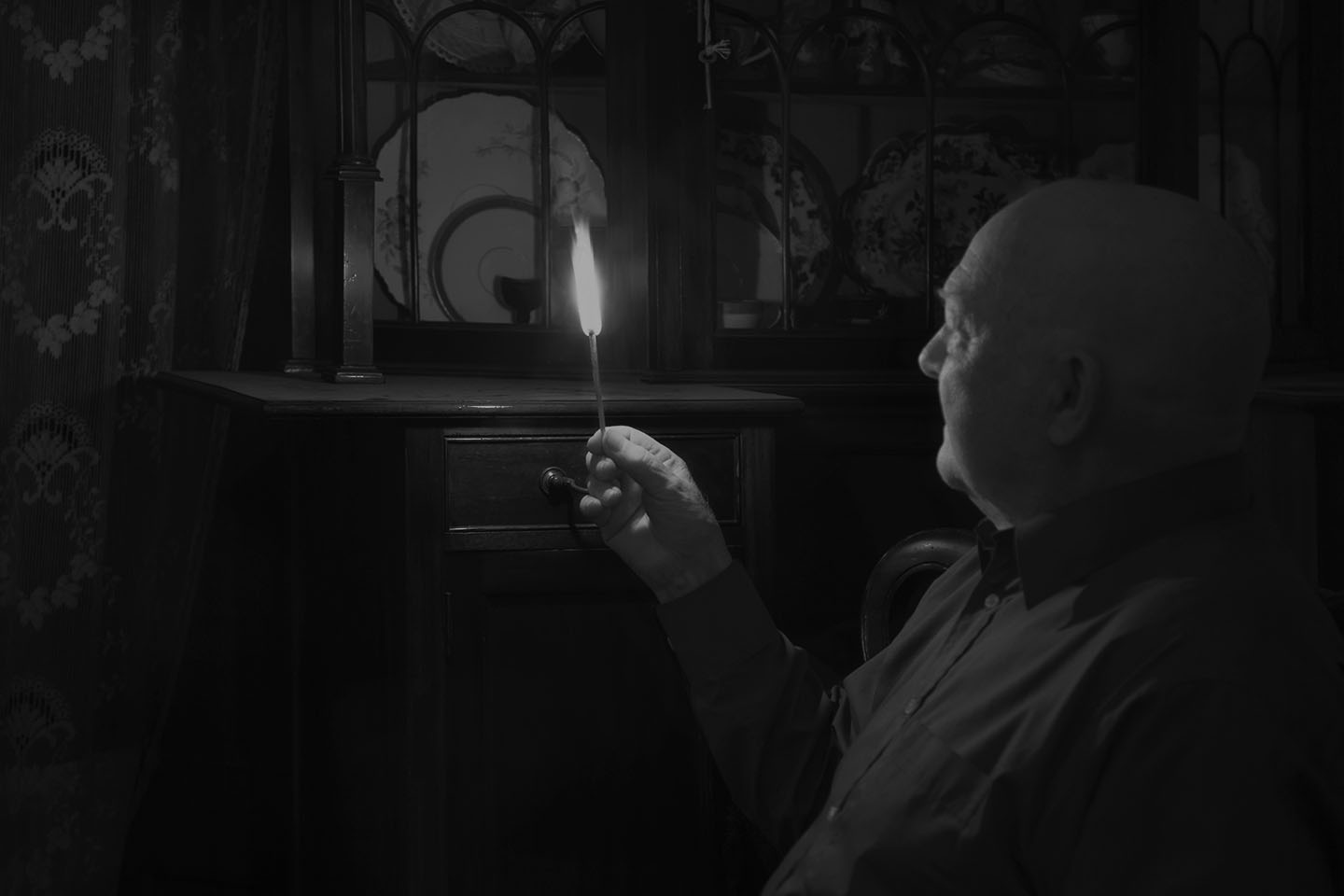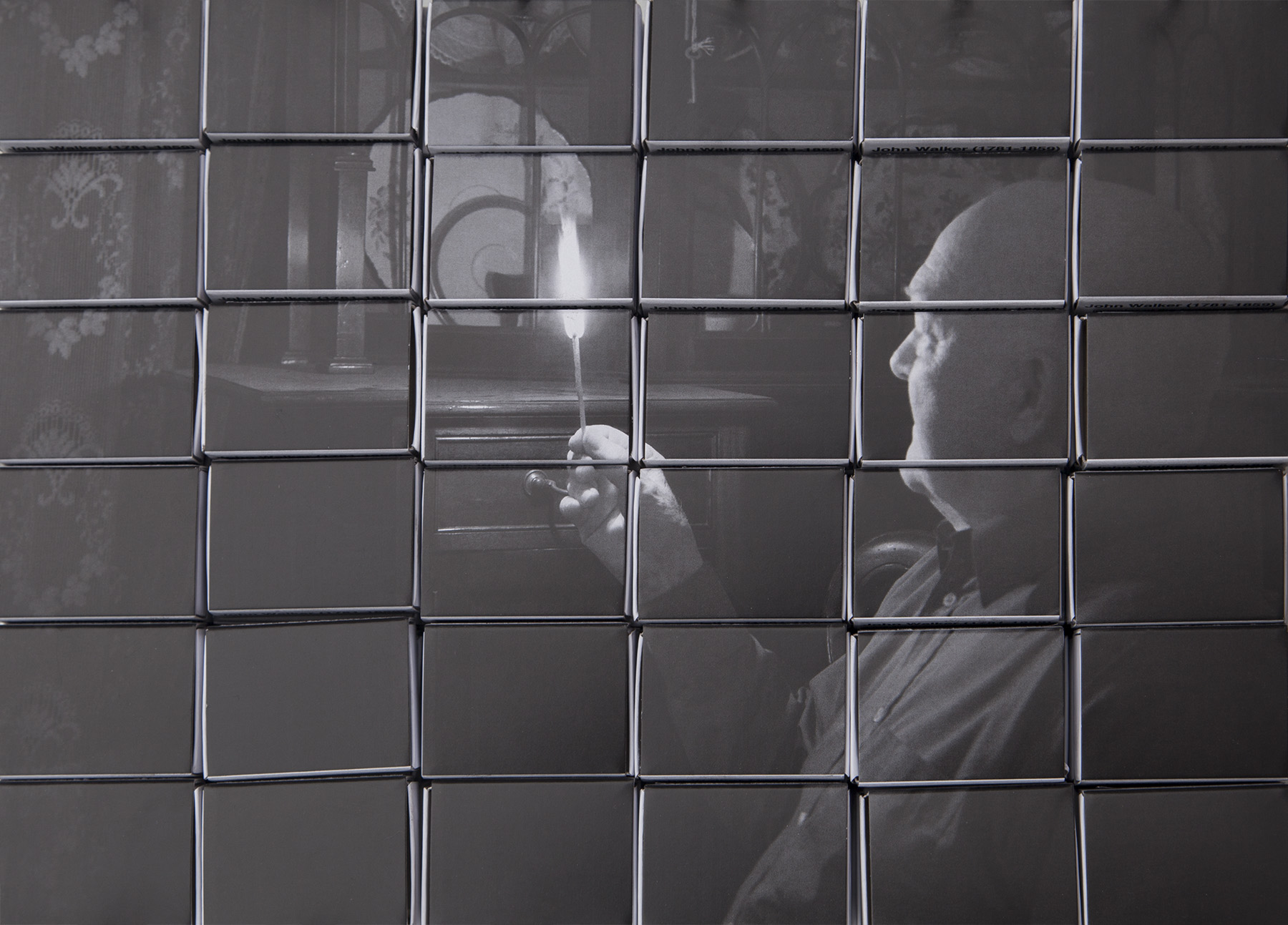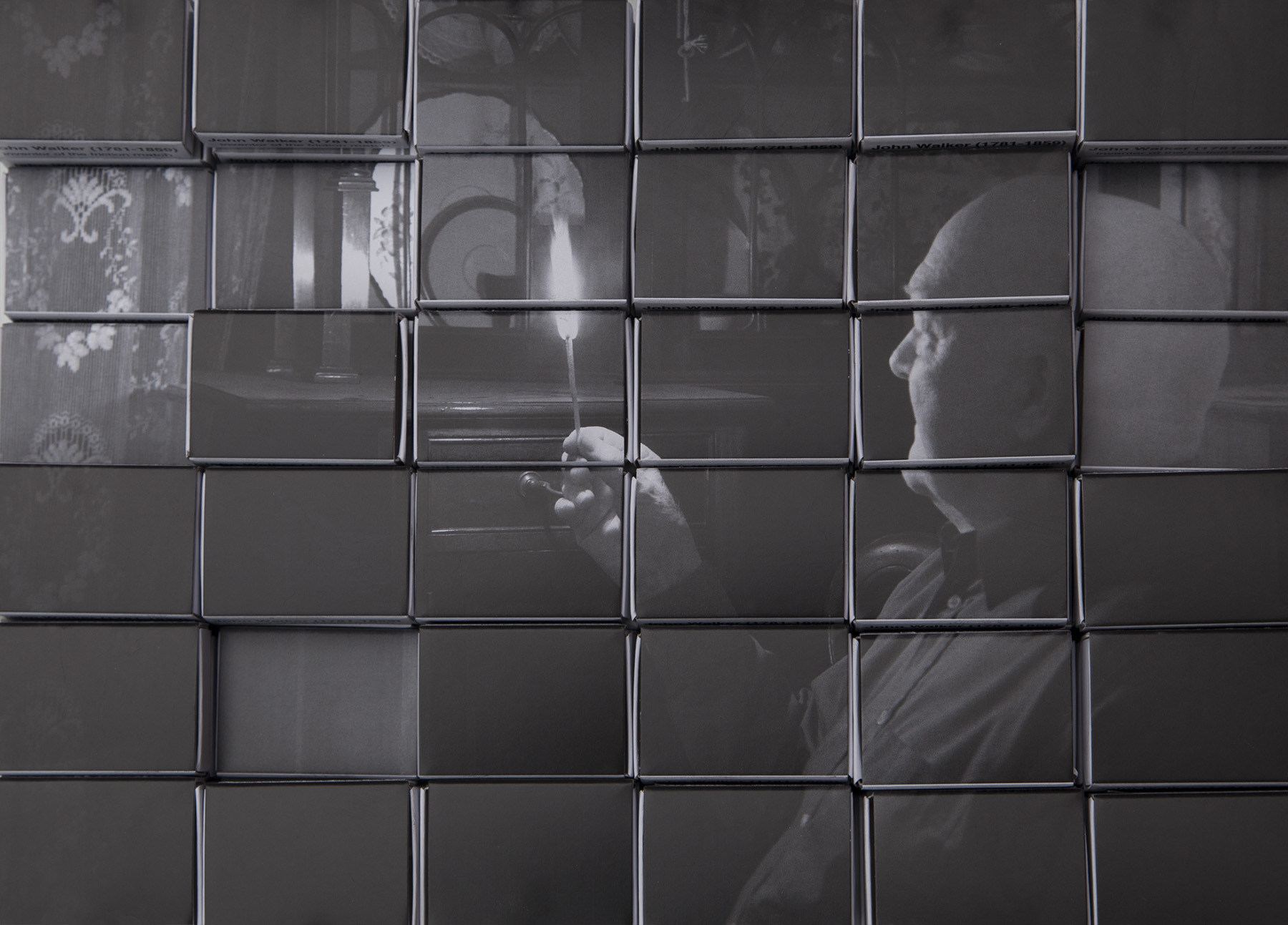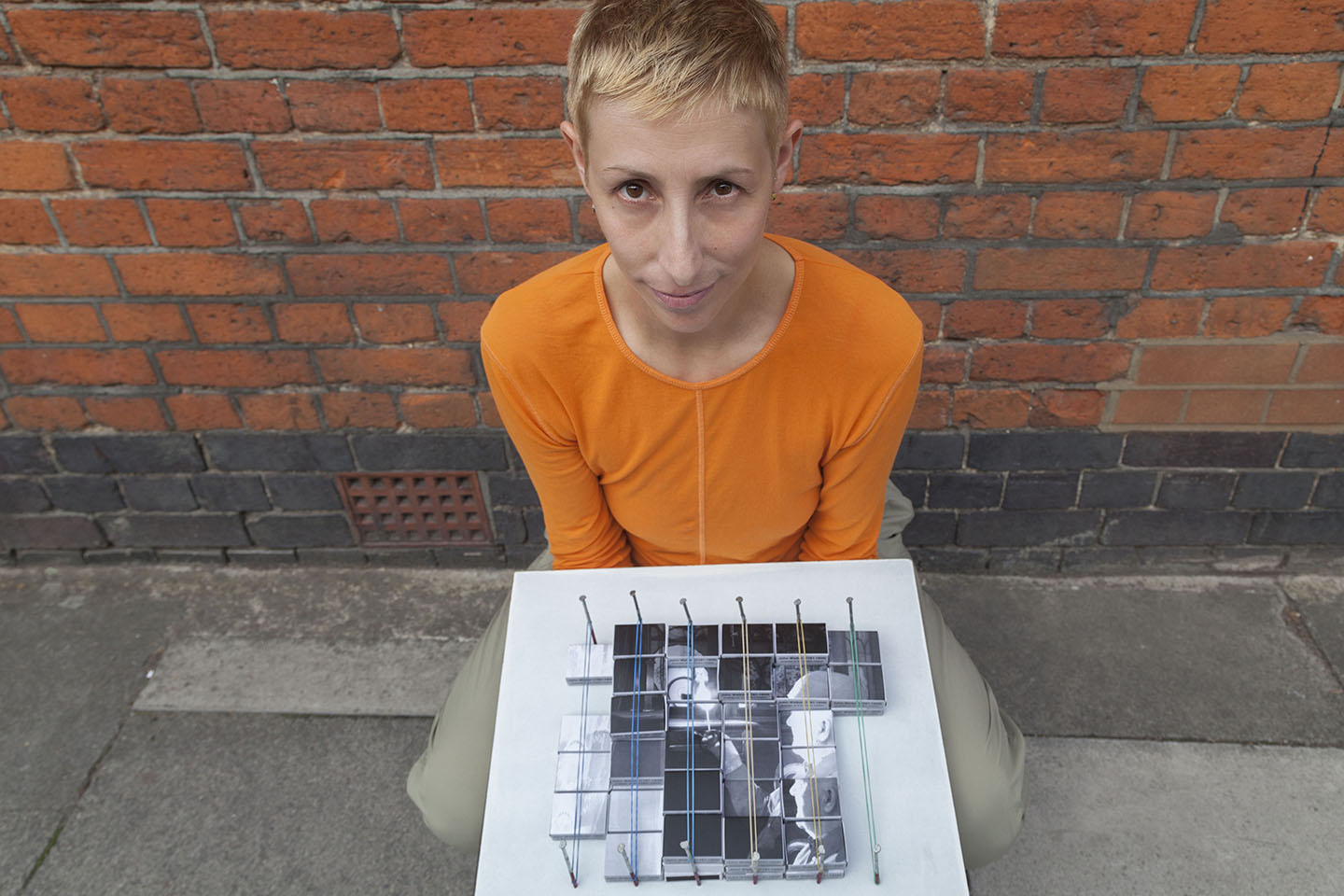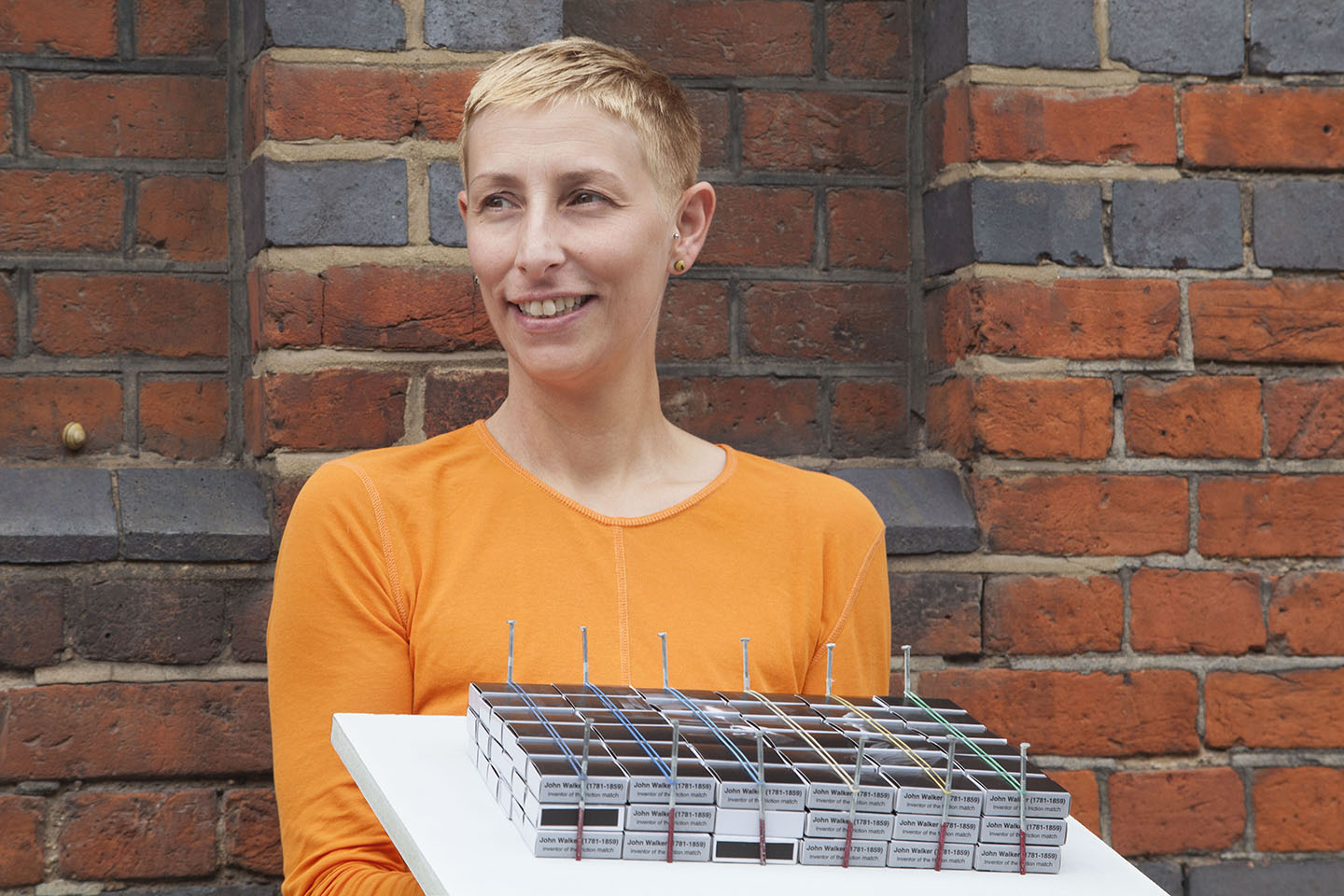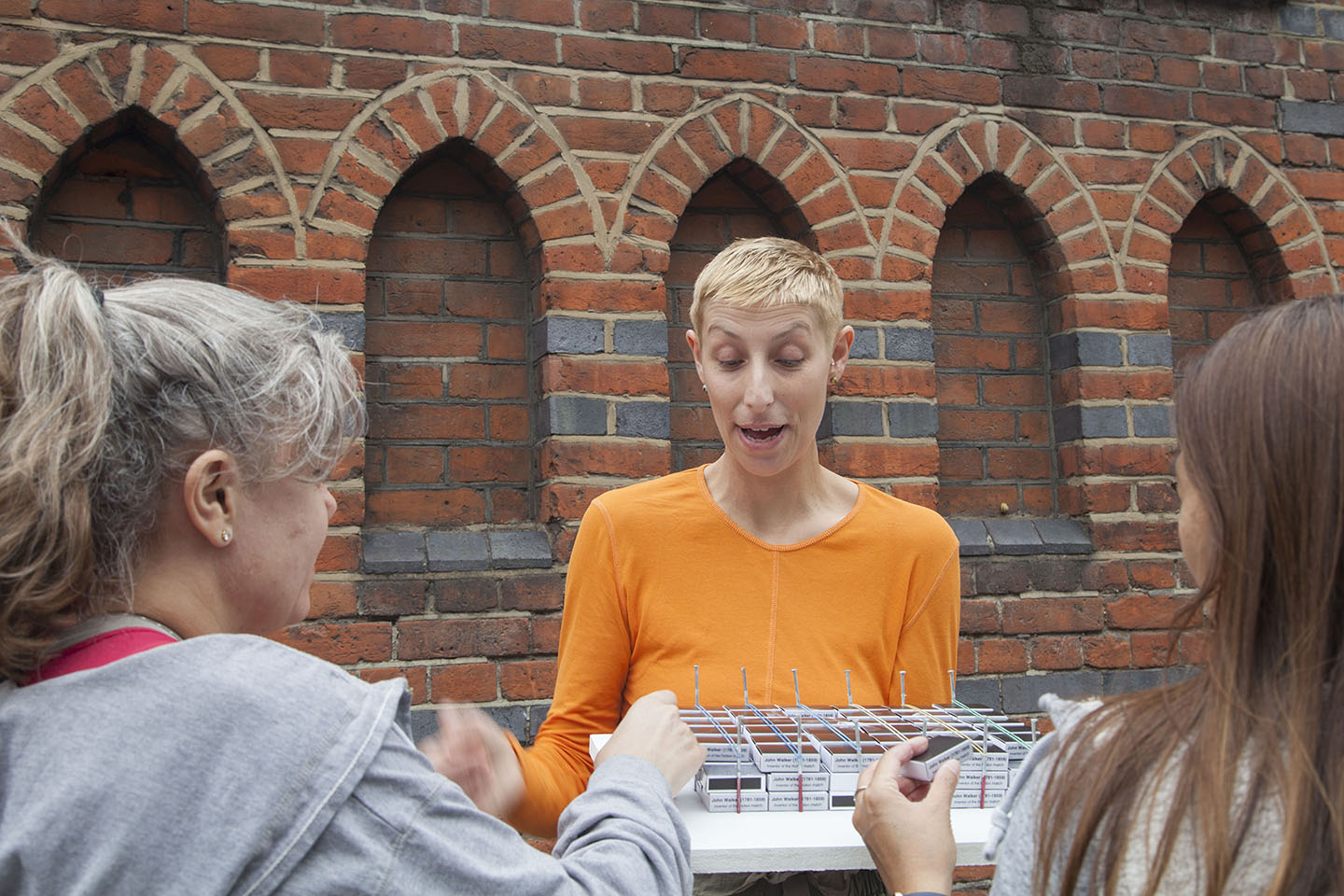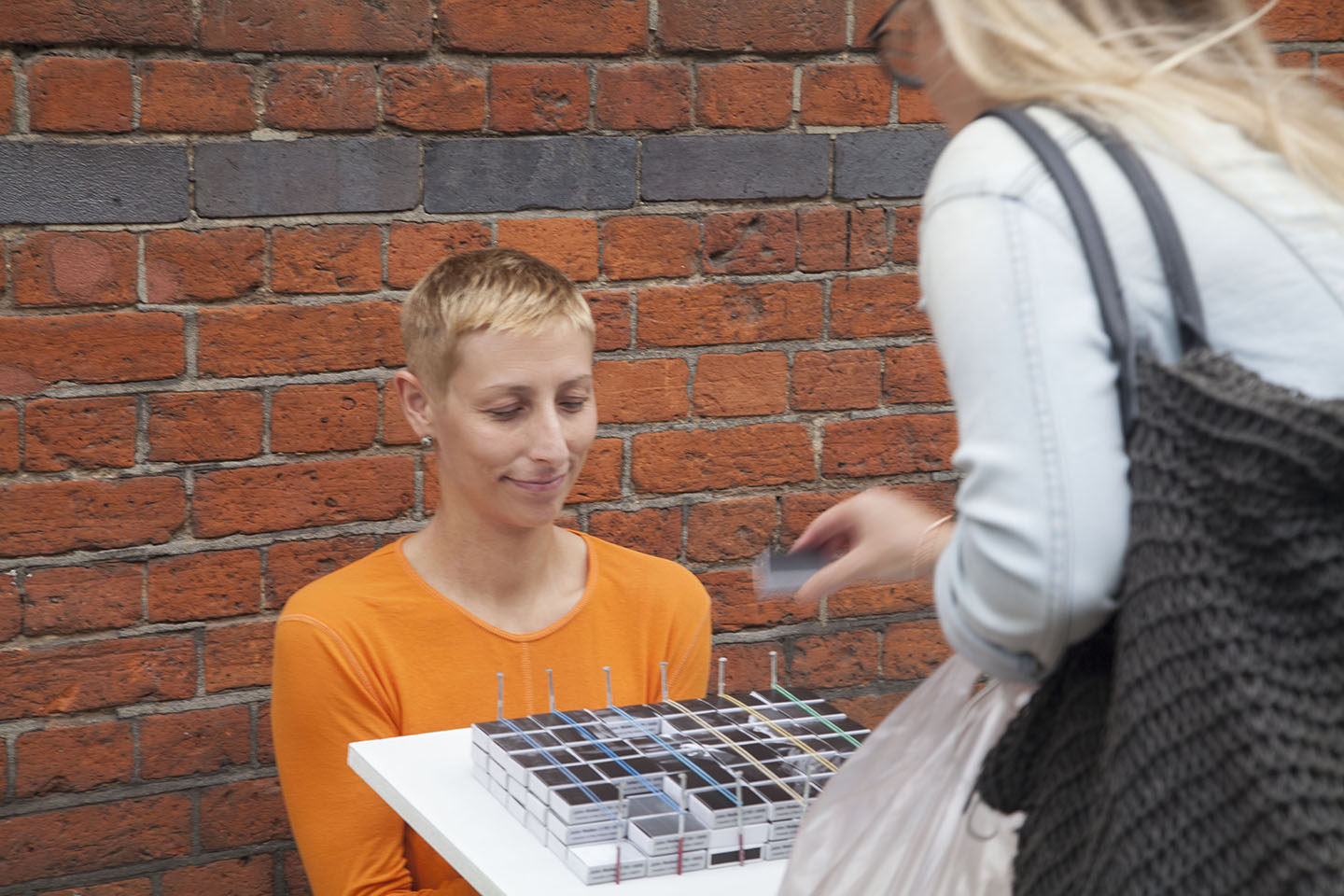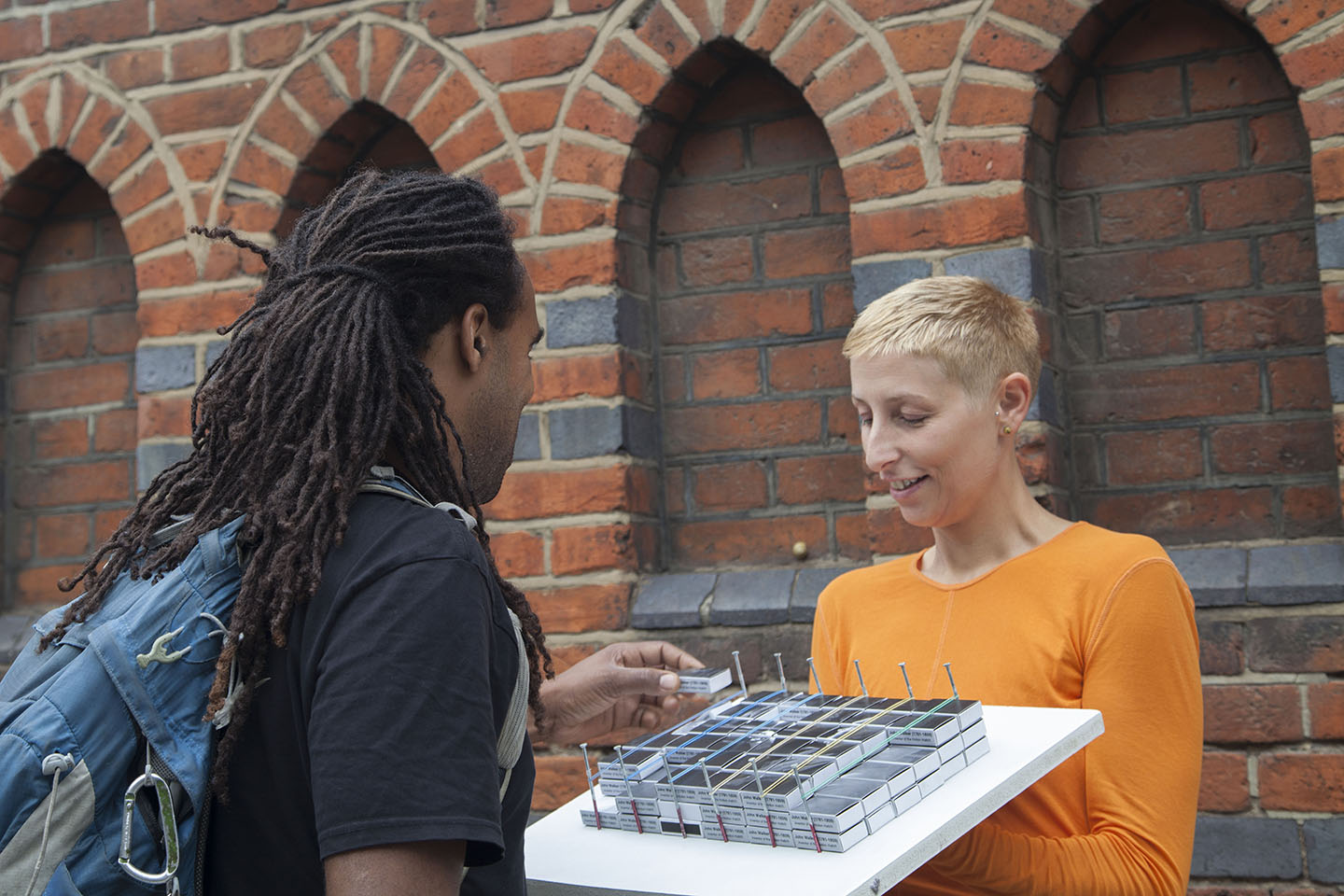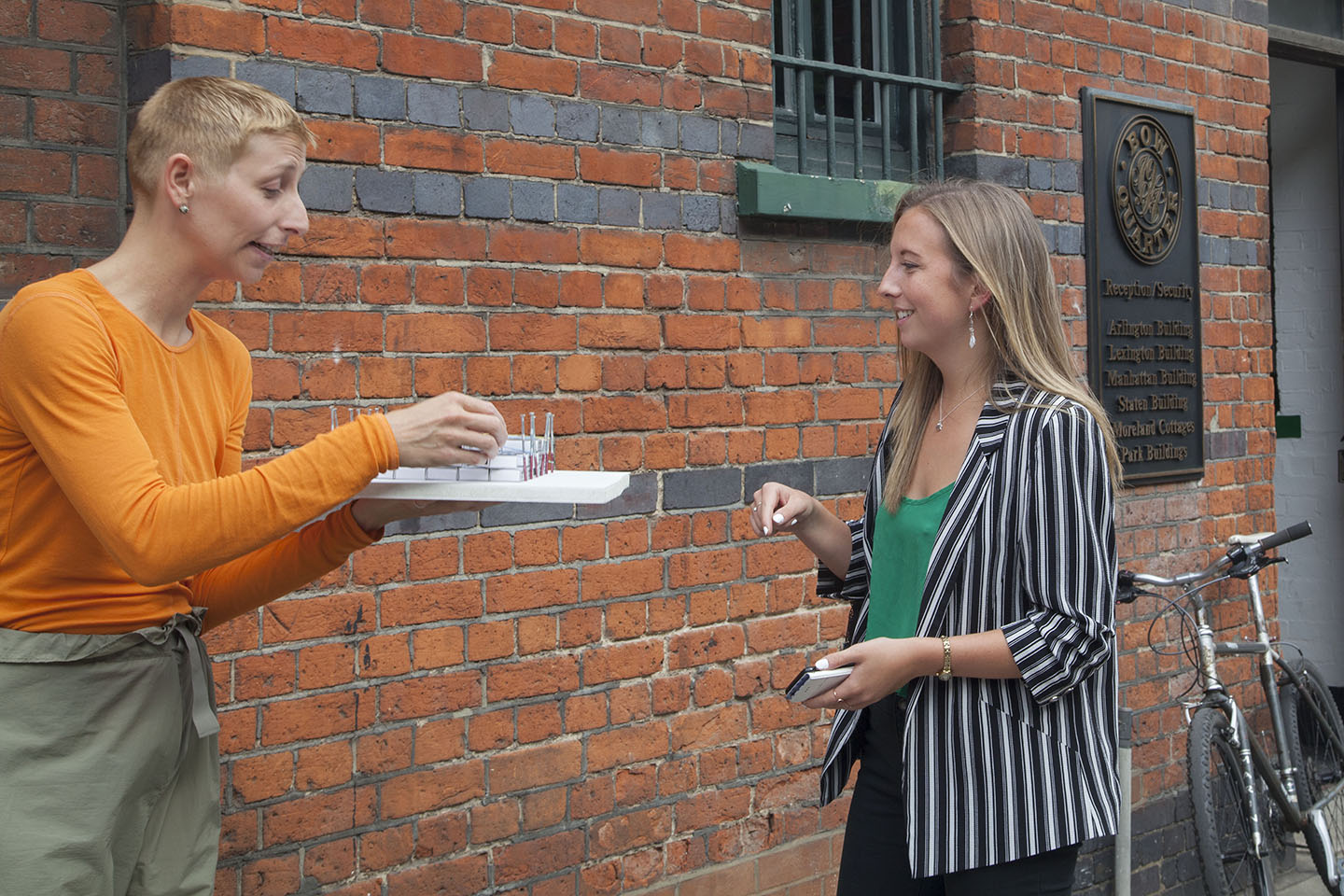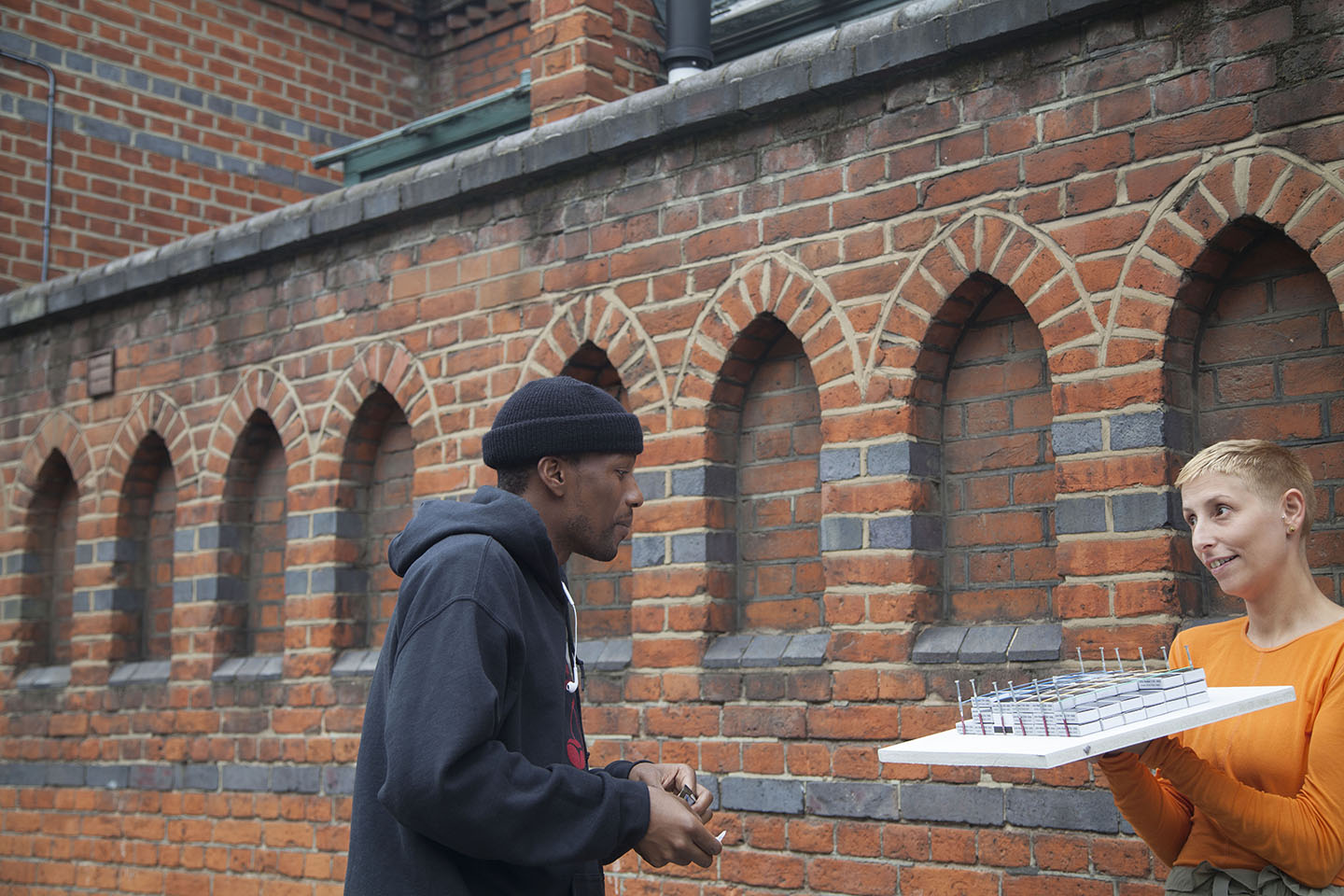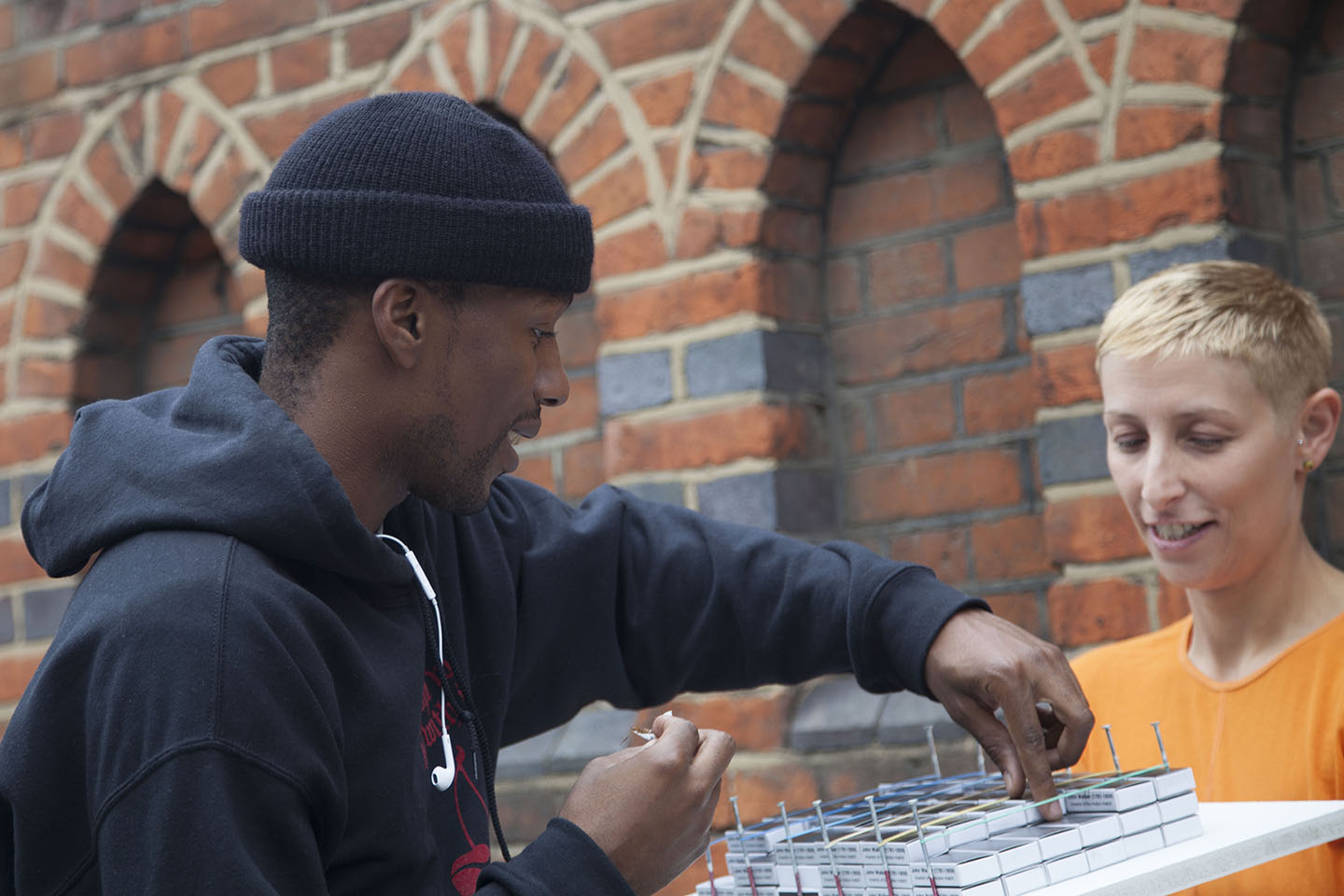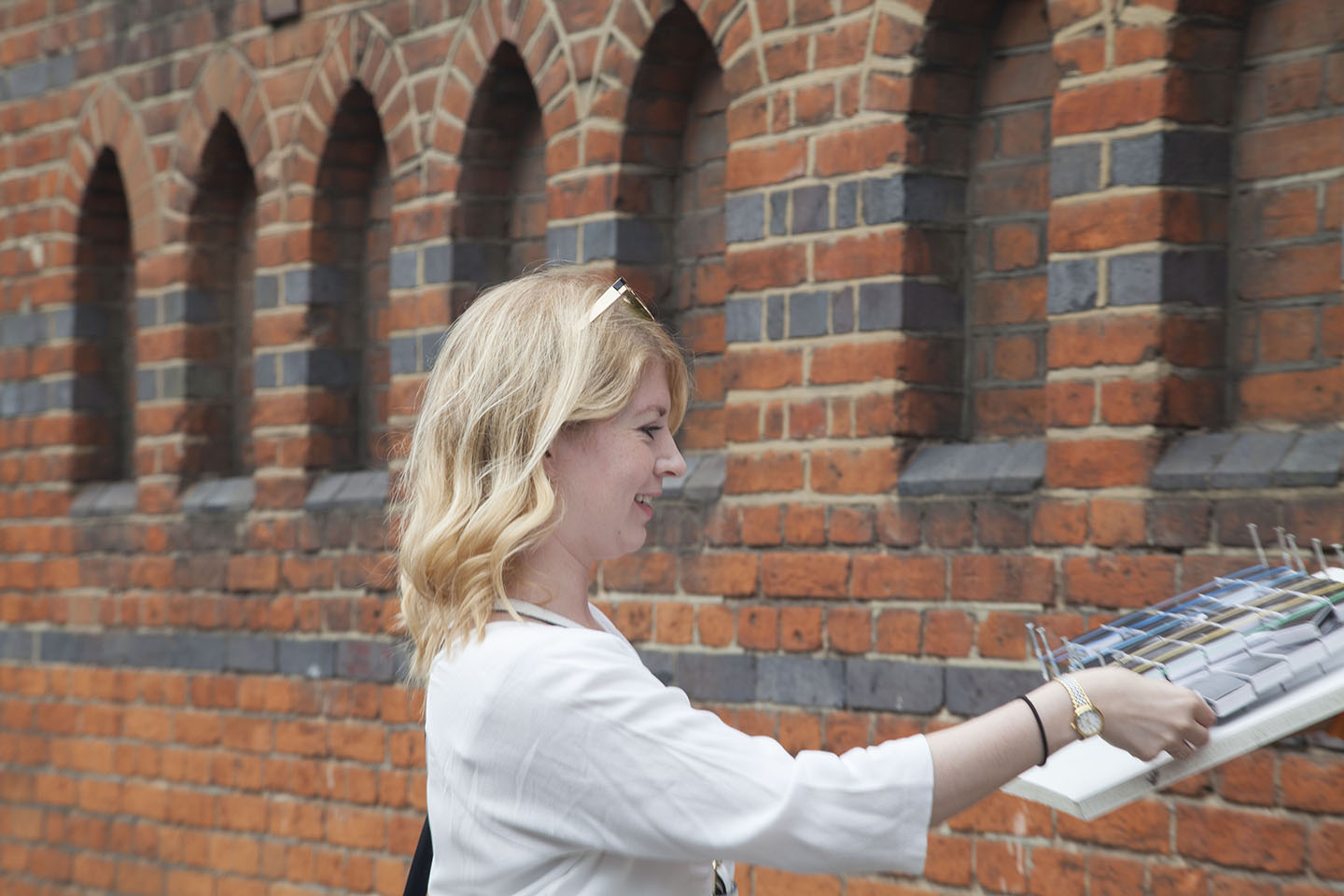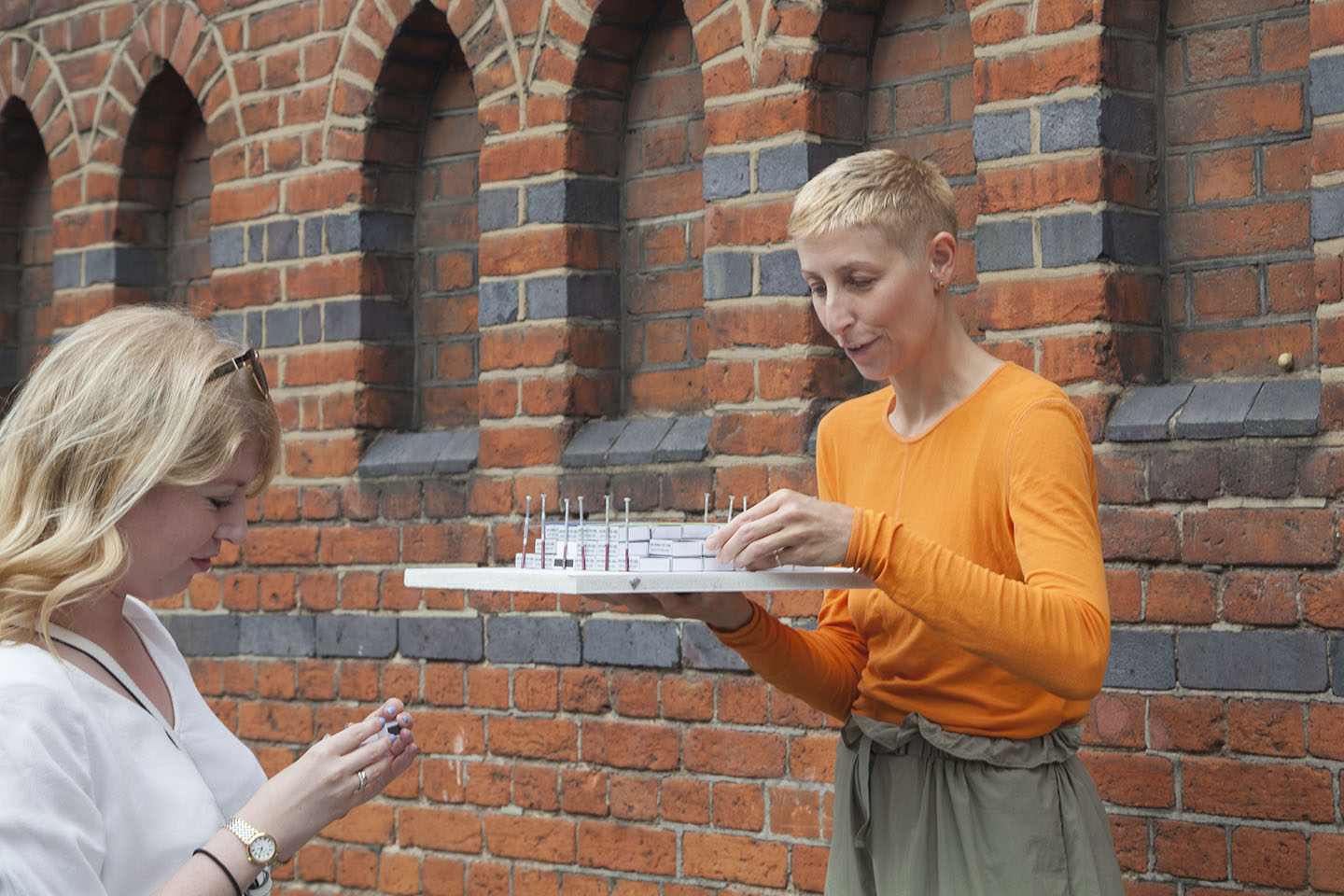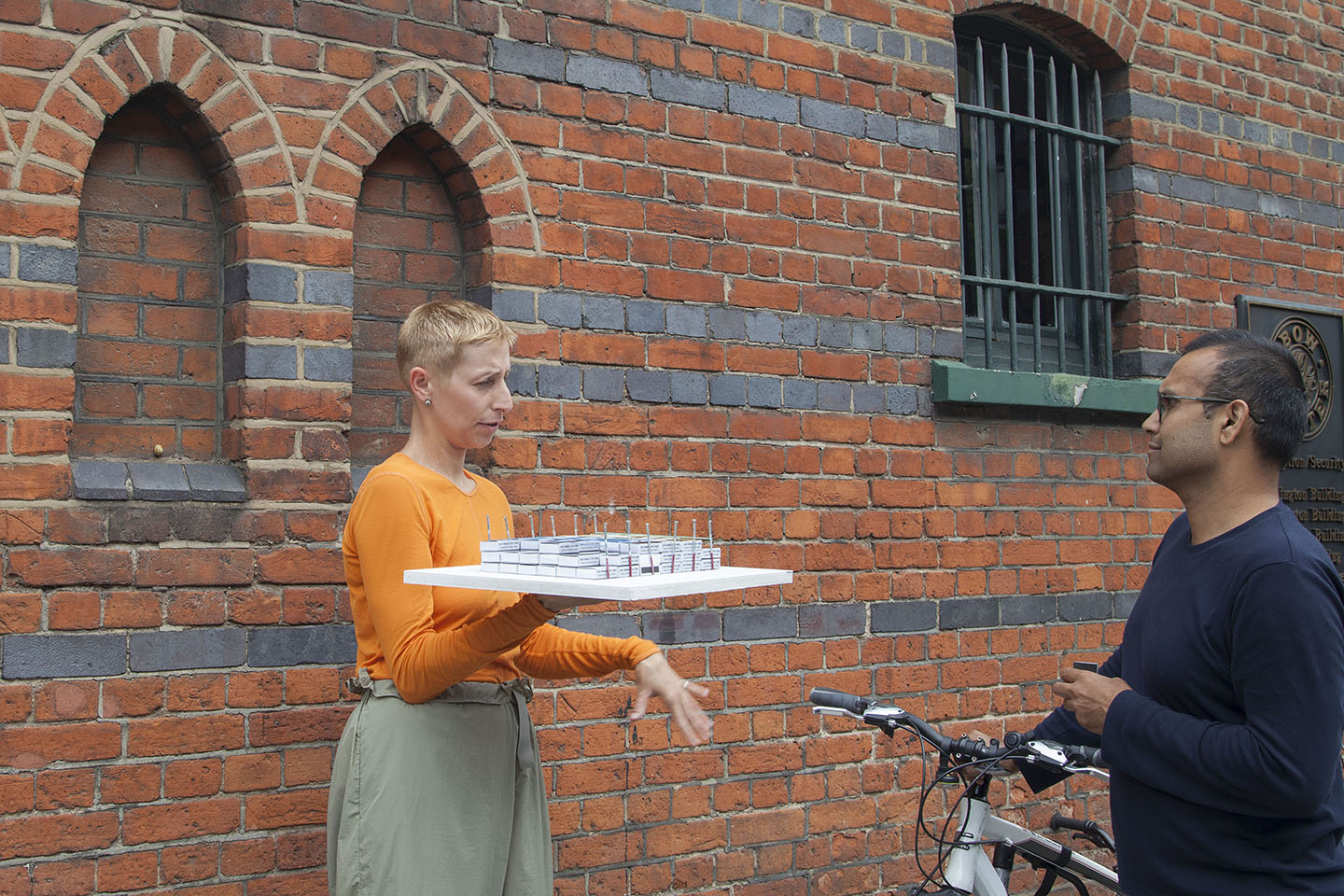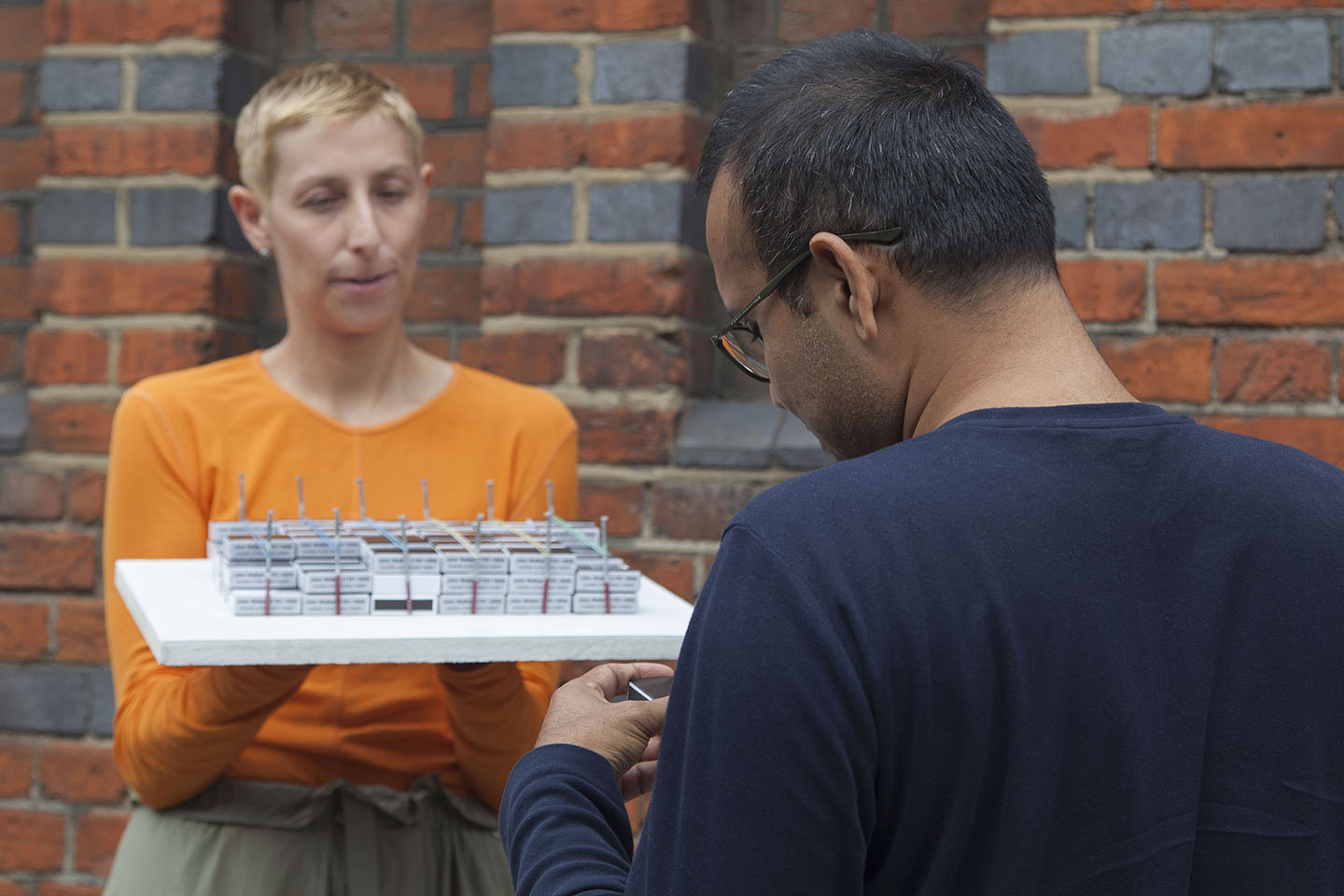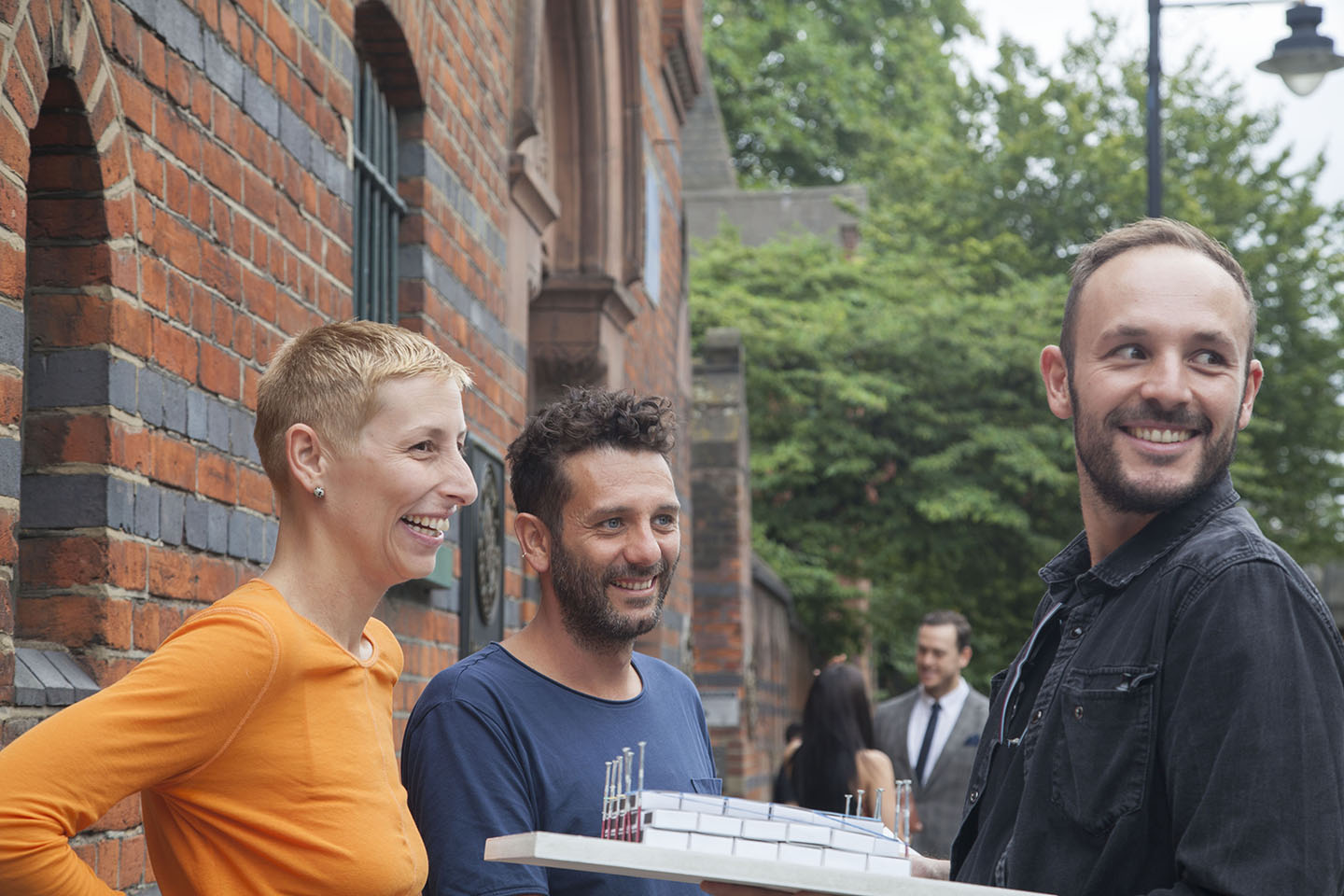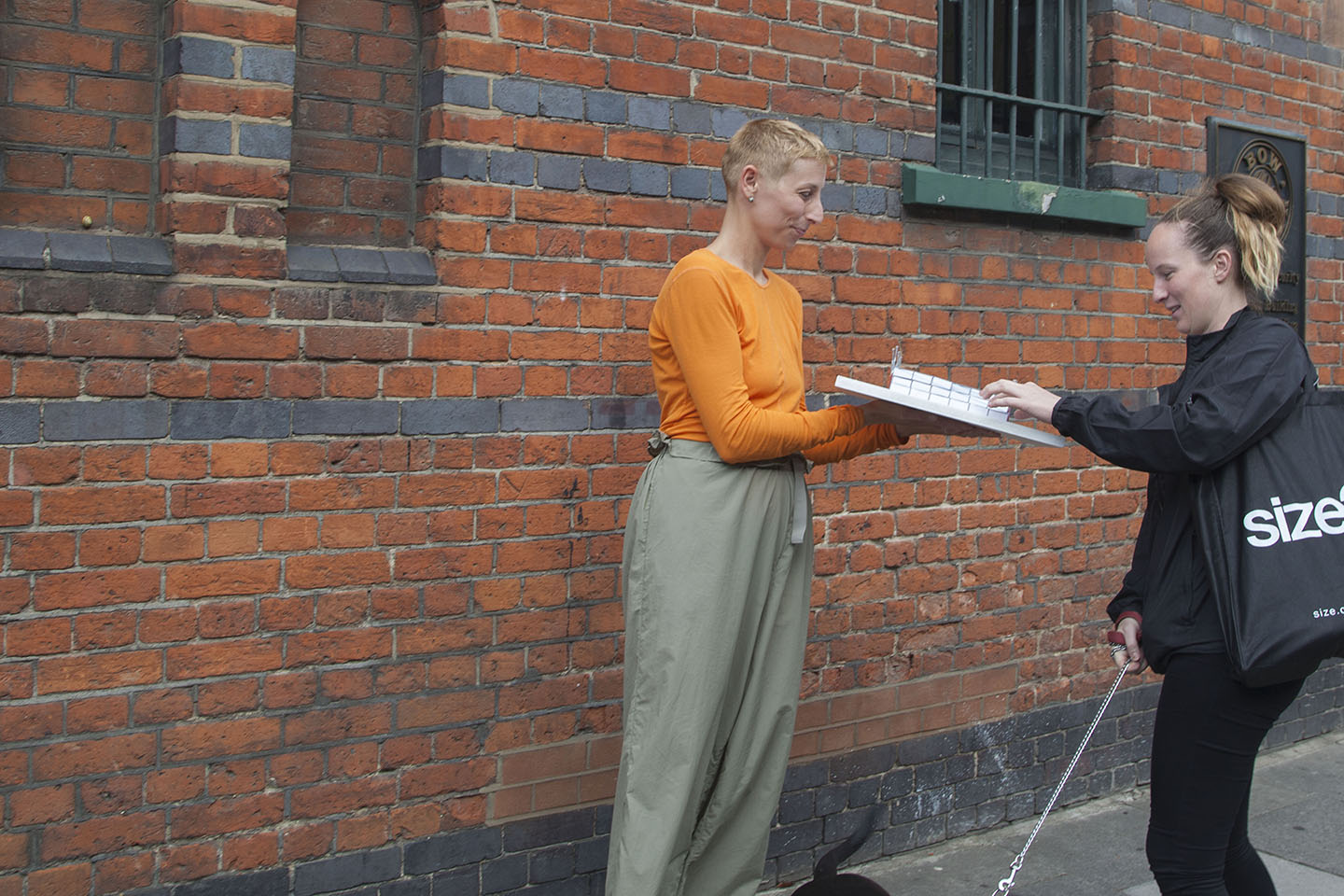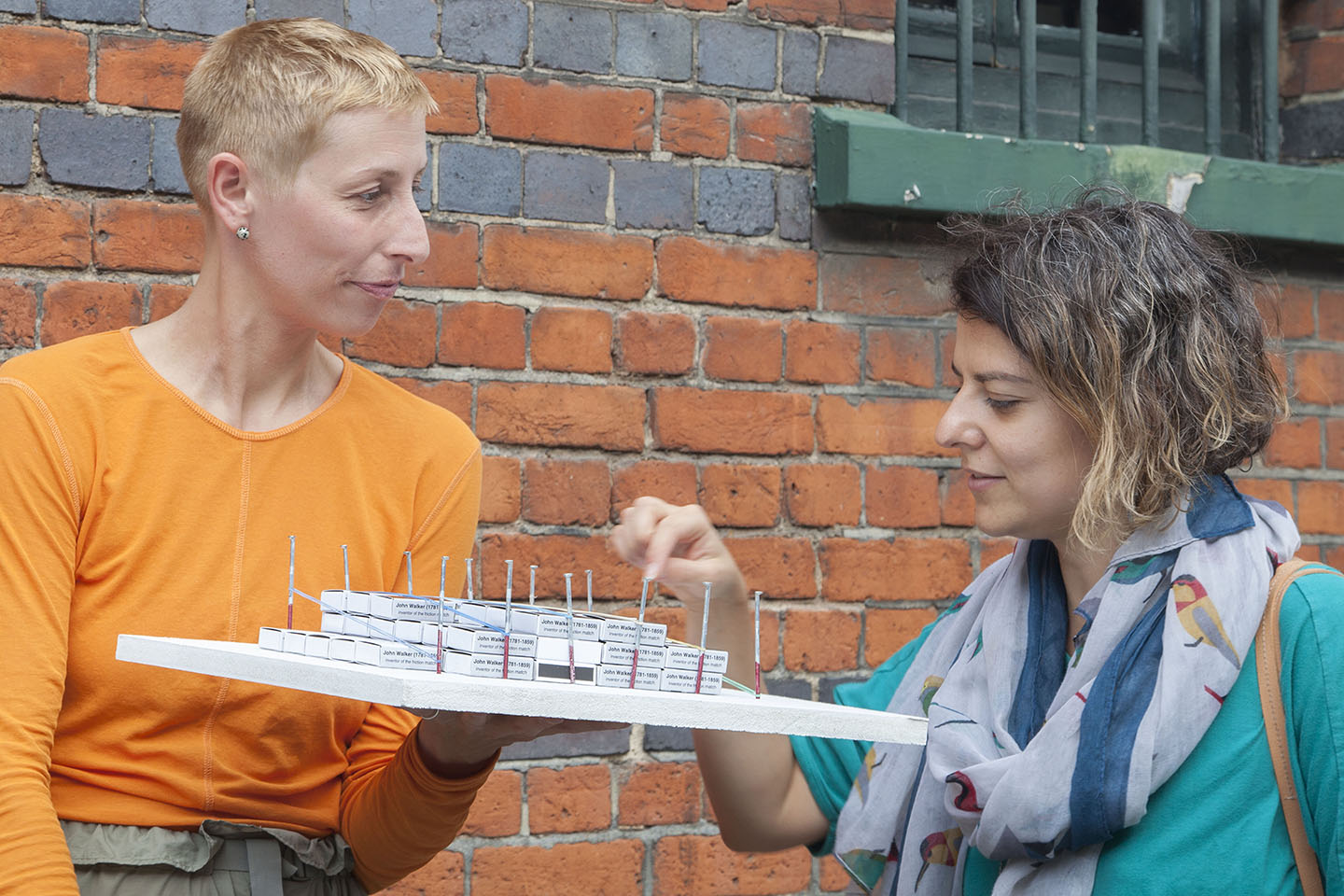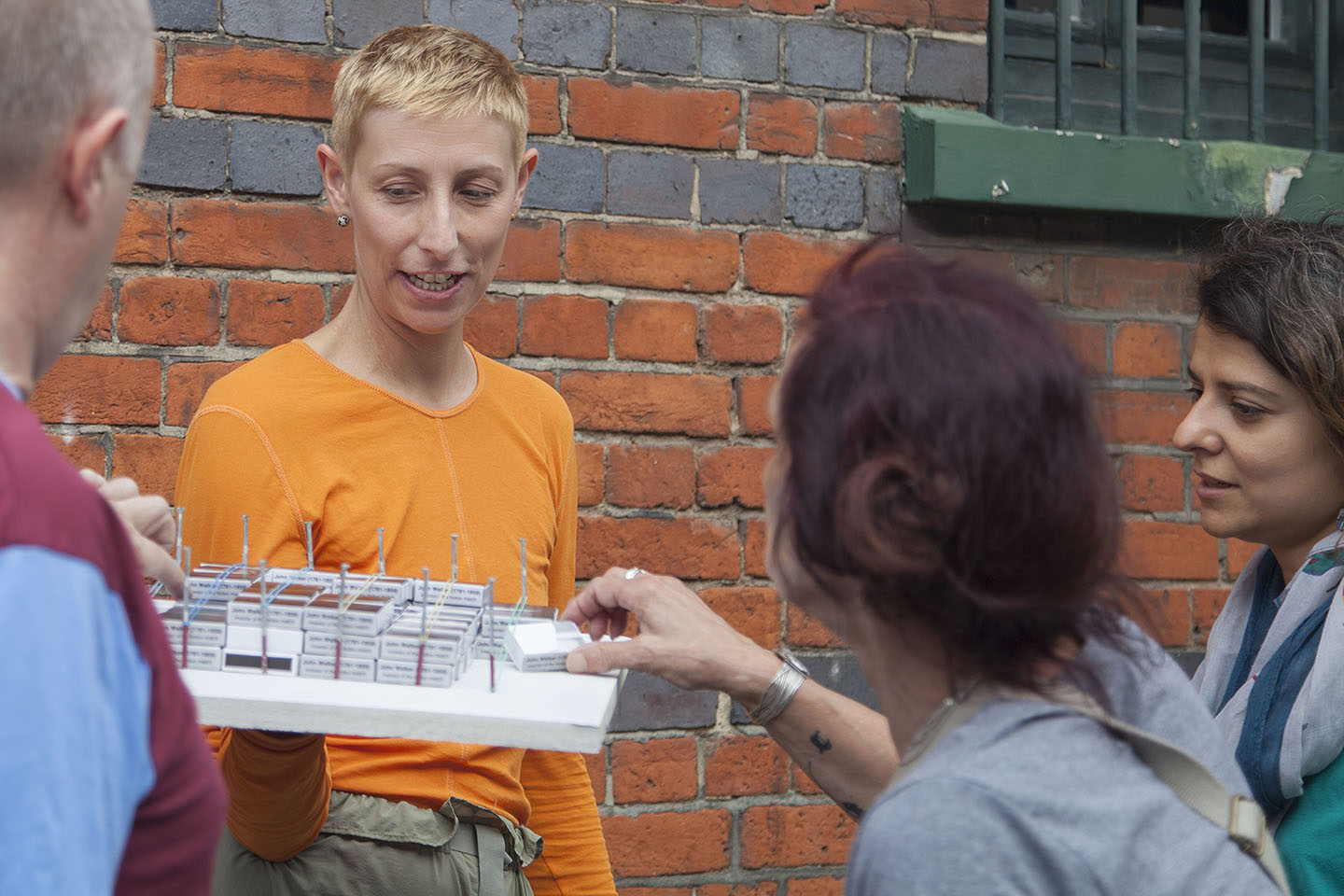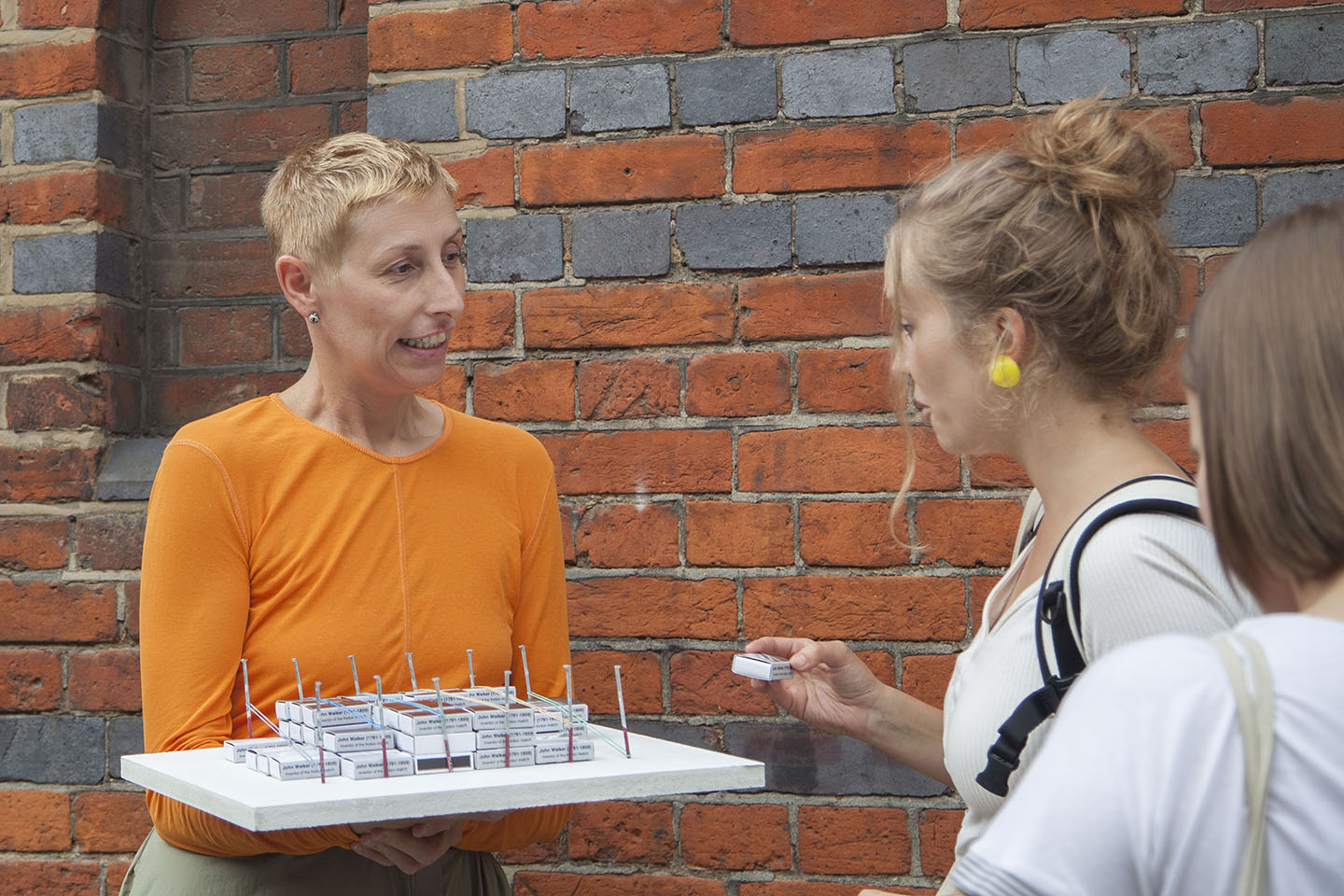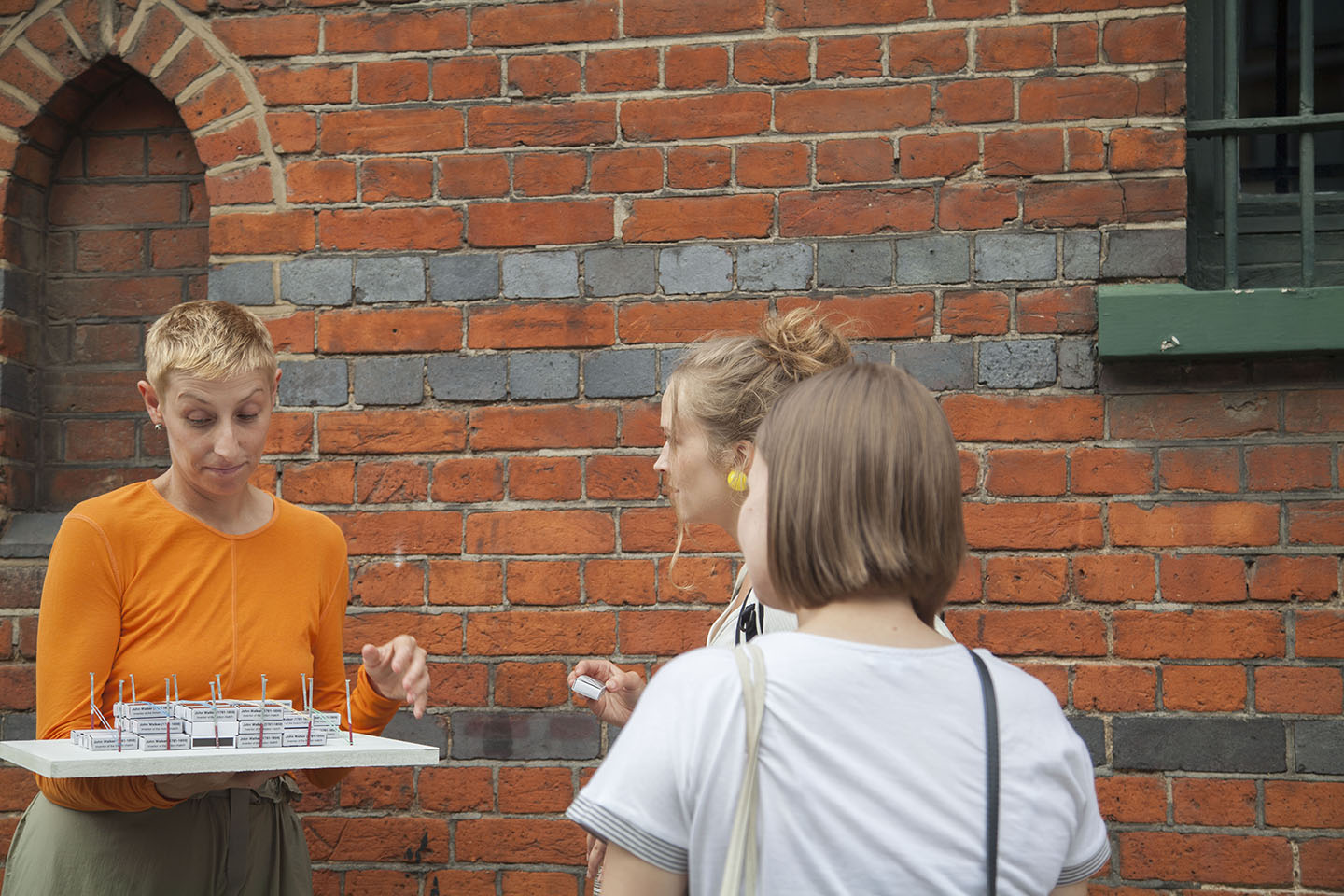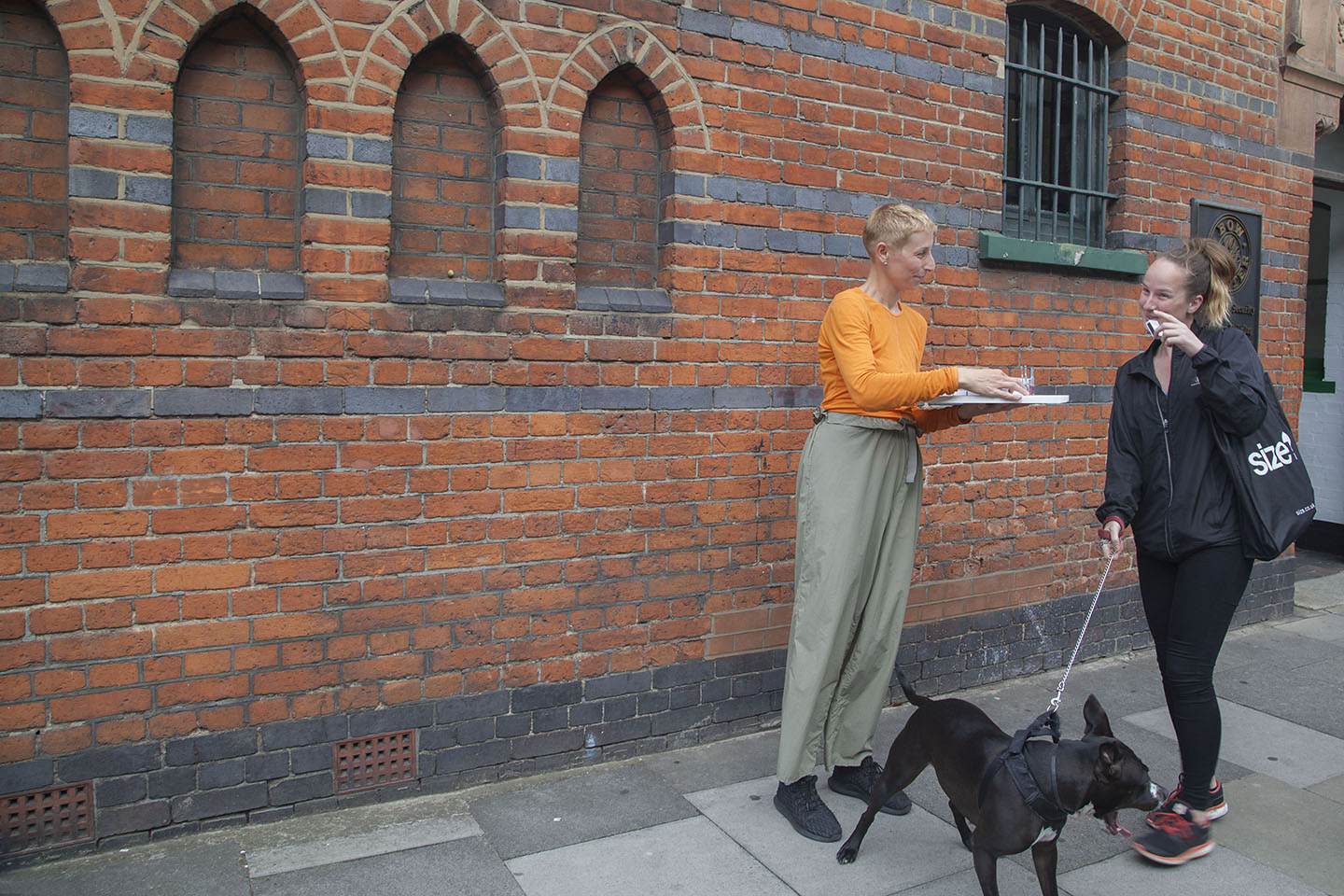Historic England launched an open call competition as part of their ‘Immortalise Season’. The aim was “to encourage new thinking around the production, use and appearance of monuments and memorials in public life.”
Stamatis Zografos, Uli Gamper and Eva Bachmann worked on a collaborative project to commemorate John Walker, the inventor of the friction match. The installation was displayed with other 9 finalists at Historic England’s Immortalise Season.
written by Stamatis Zografos
The matchbox installation
The matchbox installation comprises an ephemeral and participatory method of commemoration that celebrates Walker and his invention truly, and places Stockton-on-Tees on the map. Considering that Walker’s identity is not certain and in order to commemorate the ambiguity behind his identity, an image of him is ‘invented’. This image is formed when matchboxes, operating like pixels, are placed the one next to the other in the right sequence. The image has layers thus depth. This relates to the three-dimensionality of memory, as memory is produced and preserved in space. The lower the layer is the more faded/distant the image/memory. The visitors are asked to take away a (free) matchbox thus de-assemble the image until it disappears. This is the end of the installation but not the end of Walker’s commemoration. His memory is spread out randomly in the city through the matchbox cover design.
Matchbox Installation. Image by Historic England
The matchbox performance
A performative and participatory method of commemoration for John Walker and his invention was also introduced. Re-appropriating Hans Christian Andersen’s famous short story The Little Match Girl, our performer gave away (free) matchboxes to clueless passers-by until Walker’s image dissolves. The performer engaged with the public and informed them about Walker and his invention. The performance took place by the gate to Bow Quarter in Bow, London. This building was originally the Bryant and May match factory. It was also the site of the Match Girl’s Strike in 1888 led by Annie Besant. The edited film has neither a beginning nor an end, and it is on a constant loop. This circular narrative respects fire’s own development in time, from life to death to eternal return.
photographs taken during the performance
Afterthoughts
The ephemeral nature of John Walker’s commemoration relates to the quick burning of matches. The random matchbox distribution through performance and public participation reflects fire’s random proliferation in the urban landscape since the friction match was invented. The method of commemorating John Walker through the distribution of matchboxes is inspired by the subliminal power of matchbox cover design that was historically used as a tool for propaganda and communication (a tool widely used during the World Wars and in Communist countries).
Credits:
text: Stamatis Zografos
Raymond Peters (as John Walker)
performance by Barbara Gamper (www.barbaragamper.com)
Immortalised: the people loved, left and lost in our landscape
A free exhibition at the Workshop, Lambeth, London
30 August – 16 September 2018
For millennia, we have celebrated and mourned, marked and memorialised. Through our culture, places, stories and rituals we pass down what matters to us.
It is how we make people immortal.
But who decides who and how we remember?
Immortalised explores the ways people and events have been commemorated in England, by the statues, the plaques, shrines and murals that mark heroic, quirky, inspirational and challenging lives. But while some people are heralded, others are unrepresented: women, the working classes and people of colour are much less likely to have a place on the plinth.
An immersive exhibition, Immortalised invites you to enter four giant monuments that hold the key to our memorial past and future. From a Trafalgar Square lion to the Brighton Peace ‘Angel,’ to the boots on the contested statue of Edward Colson in Bristol, these will each explore how, why and who we remember, from the well-loved and famous, to the lost local hero.
Immortalised also reviews the challenging histories of some of those celebrated, and looks at how we might immortalise in the future, long after we are gone and perhaps, forgotten.
Open:
30 August until 16 September 2018
Wednesday to Sunday 10am to 5pm
Location:
The Workshop, 26 Lambeth High Street, Lambeth, London SE1 7AG
